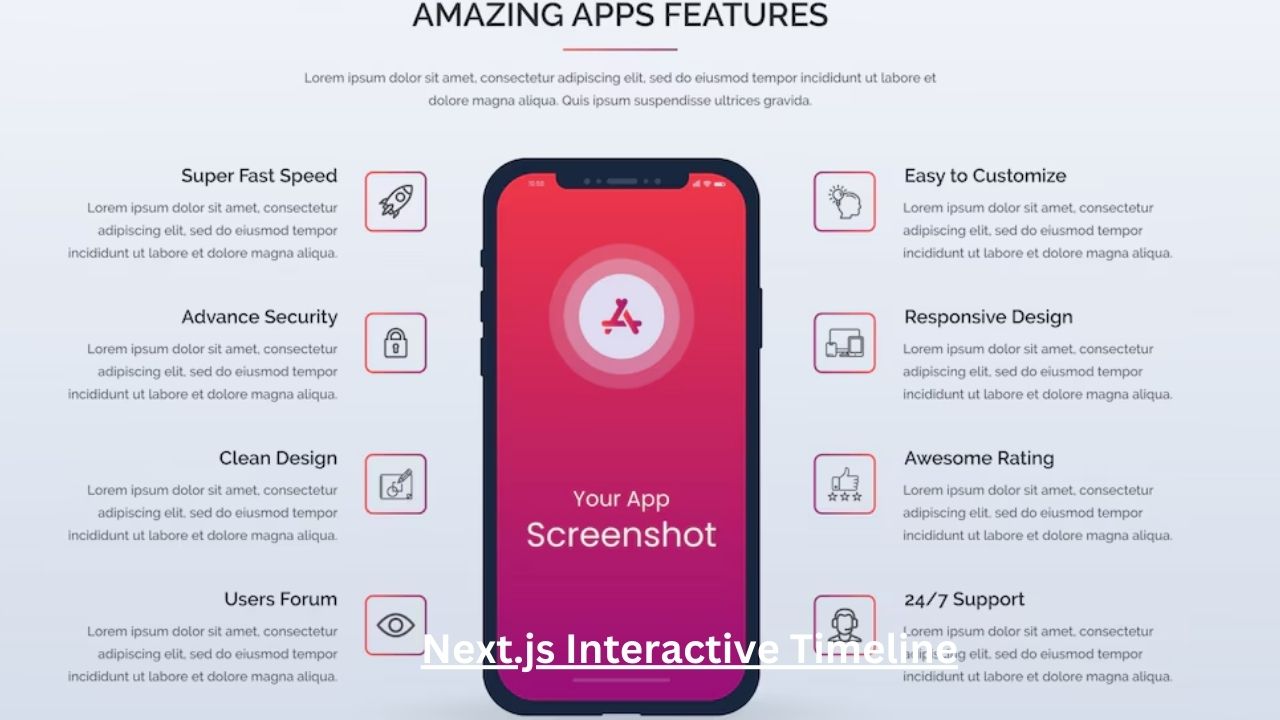Introduction to Next.js Interactive Timeline
Developers use a Next.js interactive timeline to present historical events, project milestones, or real-time updates in a structured format. This approach enhances user engagement, improves data visualization, and simplifies navigation. Users interact with content dynamically, ensuring seamless browsing experiences across various devices.
A well-implemented timeline provides better accessibility, clear information hierarchy, and engaging visuals. Next.js, a React-based framework, ensures faster performance and efficient rendering, making it an excellent choice for building interactive timelines. This guide explores the step-by-step process of building an optimized Next.js interactive timeline with best practices.
Why Choose Next.js for an Interactive Timeline?
1. Server-Side Rendering for Faster Performance
Next.js enables server-side rendering (SSR), ensuring content loads quickly without delays. This feature improves search engine optimization (SEO) and enhances user experience. Unlike traditional React applications, SSR delivers pre-rendered HTML, reducing the time required for JavaScript execution.
2. Static Site Generation for Scalability
Static site generation (SSG) allows developers to pre-build pages at compile time. This approach ensures optimal loading speed for non-dynamic content, making Next.js interactive timeline implementations more efficient.
3. API Routes for Dynamic Data
Next.js simplifies API handling by providing built-in API routes. Developers fetch and manage timeline data efficiently without relying on external servers. This approach enhances performance while maintaining flexibility in data management.
4. Image Optimization for Better Performance
Next.js includes an automatic image optimization feature that ensures faster loading times. Timelines often contain images, icons, or thumbnails, making this feature highly beneficial for performance and user experience.
Essential Components for a Next.js Interactive Timeline
1. Timeline Data Structure
Creating a structured data model is essential for managing events, dates, and descriptions effectively. Below is an example data structure for storing timeline events:
2. Timeline UI Components
Building reusable UI components ensures modularity and maintainability. Below is an example of a timeline item component in Next.js:
3. Rendering the Timeline
Mapping through the timeline data dynamically creates an engaging visual structure.
Styling the Next.js Interactive Timeline
1. Basic CSS for Timeline Layout
Styling ensures a visually appealing and responsive timeline structure. Below is a basic CSS approach:
2. Adding Animations for Smooth Transitions
Animations enhance the user experience and create an interactive feel. CSS transitions and keyframes provide smooth effects.
Enhancing Timeline with Next.js Features
1. Fetching Data from an API
Dynamic timelines often require real-time data updates. Next.js API routes help fetch and manage data efficiently.
2. Using Next.js Dynamic Routing
Next.js dynamic routing allows event-specific pages within a timeline. Below is an example of a dynamic route:
Optimizing Performance and SEO
1. Implementing Lazy Loading for Images
Lazy loading optimizes loading speed by deferring off-screen image rendering.
2. Improving SEO with Metadata
Next.js Head component ensures proper metadata for better search engine ranking.
Best Practices for a Next.js Interactive Timeline
- Use Static Generation (SSG) for better performance when handling non-dynamic timeline events.
- Optimize API calls using incremental static regeneration (ISR) to balance performance and real-time updates.
- Implement accessibility features such as keyboard navigation and screen reader support.
- Ensure mobile responsiveness using flexible layouts and media queries.
- Avoid unnecessary re-renders by using React.memo for timeline components.
Frequently Asked Questions (FAQs)
1. How do I add animations to a Next.js interactive timeline?
Use CSS animations, Framer Motion, or GSAP for smooth transitions and interactive effects.
2. Can I fetch real-time timeline data using Next.js?
Yes, Next.js API routes and SWR allow efficient real-time data fetching and state management.
3. How do I make a Next.js timeline mobile-friendly?
Use CSS flexbox, media queries, and responsive image handling to ensure a seamless mobile experience.
4. What is the best library for an interactive timeline in Next.js?
Libraries like React Vertical Timeline, Timeline.js, and Framer Motion offer excellent support for interactive timeline features.
5. Can I use Next.js for historical event timelines?
Yes, Next.js efficiently handles static and dynamic historical event timelines with optimized rendering.
Conclusion
A well-designed Next.js interactive timeline enhances storytelling, improves engagement, and optimizes content organization. By implementing best practices, developers create smooth, interactive, and performance-driven experiences for users. Whether displaying project milestones or historical events, Next.js ensures a seamless timeline experience across all devices.











